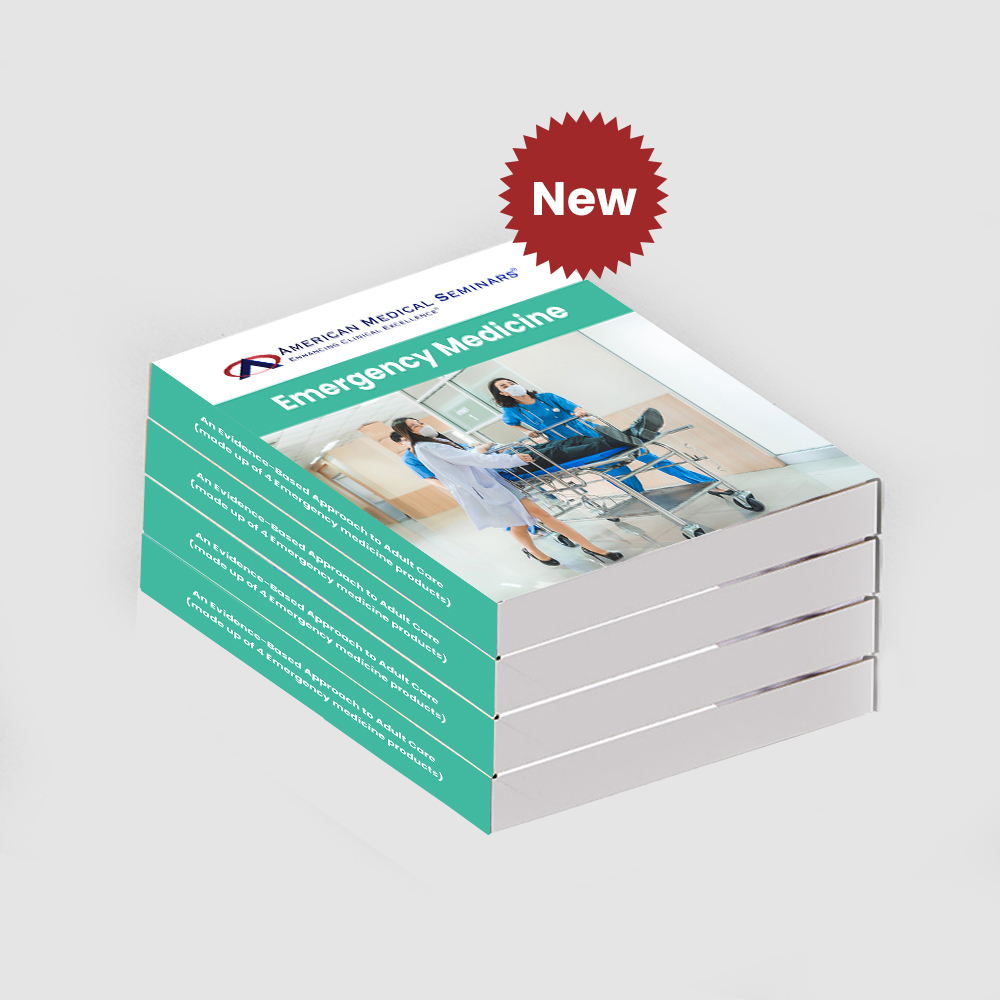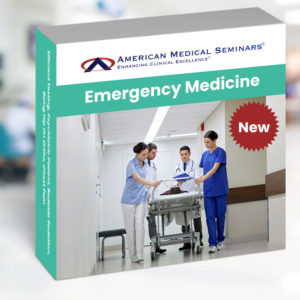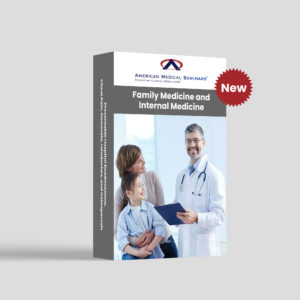Title: 2022 Emergency Medicine: An Evidence-Based Approach to Adult Care (Recorded Live)
Course ID: W-20220418-Emergency Medicine
Faculty: Kenneth H. Butler, D.O.,F.A.C.E.P.,F.A.C.O.E.P.,F.A.A.E.M., Andrew Chang, M.D., M.S., F.A.C.E.P., F.A.A.E.M, and Joel Kravitz, M.D., F.A.C.E.P, F.R.C.P.S.C.
Original Release Date: July 1, 2022 Expiration Date: July 1, 2025
TOPIC 1: Facial Trauma (Kravitz)
Upon completion of this session, the participant should be able to: EBM, GL, COMP
- Perform both a rapid screen and a thorough evaluation of the patient with facial trauma.
- Outline the challenges in securing an airway in the patient with facial trauma.
- Describe the indication for different imaging procedures for facial trauma.
- Manage injuries to the soft tissues of the face (lips, tongue, eyelids…).
TOPIC 2: Drug-Drug Interactions (DDIs) (Kravitz).
Upon completion of this session, the participant should be able to: EBM, GL, COMP
- Assess the scope of the problem of drug-drug interactions as it pertains to both the outpatient and emergency settings.
- Explore interactions between prescription and non-prescription medications and review their treatments in the context of the Beers Criteria.
- Review common drug-drug interactions and their complications commonly seen in the emergency room.
TOPIC 3: Neuromuscular Weakness (Kravitz).
Upon completion of this session, the participant should be able to: GL, COMP
- Discriminate between various clinical entities causing neuromuscular weakness, including Guillain-Barre syndrome, myasthenia gravis, and others.
- Demonstrate techniques to be able to discriminate between organic and functional weakness.
- Compare and contrast upper and lower motor neuron disease.
TOPIC 4: As the World Turns: Peripheral Vertigo in the ED (Chang) .
Upon completion of this session, the participant should be able to: GL, COMP
- Illustrate the pathophysiology of benign positional vertigo.
- Differentiate the various diagnostic tests in the evaluation of patients with peripheral vertigo.
- Discover how to perform various therapeutic maneuvers, such as the Epley maneuver, in the treatment of patients with benign positional vertigo.
- Identify treatment recommendations for vestibular neuritis using evidence-based medicine from NEJM.
TOPIC 5: Electrolytes at Panic Levels (Chang) .
Upon completion of this session, the participant should be able to: GL, COMP
- Specify common ED causes of potassium and sodium abnormalities.
- Discriminate the various therapies used to treat hyperkalernia.
- Specify the indications to adminster hypertonic saline.
TOPIC 6: Aortic Catastrophes (Chang) .
Upon completion of this session, the participant should be able to: GL, COMP
- Implement AAA Screening as per the systematic review of guidelines.
- Determine the Stanford classification of a particular aortic dissection based on location.
- Apply appropriate initial therapy in the patient with aortic dissection.
- Assess the risk of rupture of abdominal aortic aneurysm based on size.
TOPIC 7: The Thunderclap Headache (Chang) .
Upon completion of this session, the participant should be able to: GL, COMP
- Determine characteristics suggesting a thunderclap headache.
- Construct a differential diagnosis beyond subarachnoid hemorrhage in the patient presenting with a thunderclap headache as per the ACEP clinical policy on acute headache.
- Interpret spinal fluid results in the workup of a thunderclap headache.
-
-
TOPIC 8: Ophthalmologic Emergencies (Kravitz) .
Upon completion of this session, the participant should be able to: GL, COMP
- Develop an algorithm for the differential diagnosis of the red eye.
- Create a diagnostic strategy for sudden monocular and binocular blindness.
- Review the treatment plans for emergent ophthalmic conditions, including glaucoma, and retinal vain and artery occlusions as per the American Academy of Ophthalmology preferred practice pattern guidelines .
- Develop a treatment strategy for ophthalmic trauma.
-
-
TOPIC 9: Trauma and Orthopedic Pitfalls (Kravitz) .
Upon completion of this session, the participant should be able to: GL, COMP
- Detect subtle injuries that, unless treated, can have impact on long term musculoskeletal function.
- Determine and treat subtle presentation of severe traumatic and neurologic injuries.
- Distinguish particular injury patterns to avoid missing correlated injuries in a traumatically injured patient.
-
-
TOPIC 10: Endocrine Emergencies (Kravitz).
Upon completion of this session, the participant should be able to: GL, COMP
- Develop, using the lated evidence and the ADA position statement, a comprehensive treatment plan for diabetic ketoacidosis (DKA).
- Compare and contrast DKA and hyperosmolar non-ketotic states (HHNK).
- Detect adrenal insufficiency and formulate an efficient treatment plan.
- Construct treatment algorithms as per the AACE guidelines, for the management of thyrotoxicosis, hyperthyroidism, and thyroid storm.
-
-
TOPIC 11: Is This Test Necessary: Efficient Use of Testing in the Emergency Department (Kravitz).
Upon completion of this session, the participant should be able to: GL, COMP
- Develop, using the available evidence, efficient decision-making skills for the use of some commonly used lab and radiographic tests in the ED as per the COC guidance and recommendations.
- Determine the utility of some less commonly used tests in the ED, including strep tests, D-dimers and coagulation tests.
- Evaluate case scenarios to discuss optimizing patient care while reducing unnecessary costs.
-
-
TOPIC 12: Management of the Emergency Psychiatric Patient (Kravitz) .
Upon completion of this session, the participant should be able to: GL, COMP
- Recognize the early signs of agitation and employ strategies to resolve them.
- Select appropriate agents for chemical restraint based on available evidence.
- Using ACEP guidelines as a framework, develop a plan for the medical clearance of a psychiatric patient.
-
-
TOPIC 13: Bedside Sedation (Butler).
Upon completion of this session, the participant should be able to: GL, COMP
- Analyze patient characteristics and clinical presentation where the most important risk is for apnea.
- Debate pulse oximeter and wave form capnography- do we need it?.
- Assess and specify when sedation is an appropriate consideration for the critically ill.
- Employ the use of sedation in the head injured patients as per the Clinical Practice Guidelines for emergency department use of Ketamine.
-
-
TOPIC 14: Being “Hip” On Ortho (Butler) .
Upon completion of this session, the participant should be able to: GL, COMP
- Assess if this is just another ‘found down’ patient.
- Identify which fractures have the highest ‘missed’ rate.
- Determine when ultrasound is better than a plain film.
- Using evidence-based medicine from NEHM, identify indications for fasciotomy.
-
-
TOPIC 15: Chest Pain in The Emergency Department- Value of Heart Score (Butler).
Upon completion of this session, the participant should be able to: GL, COMP
- Who should we heart score- Appraise which patients we should heart score in the ED.
- Do risk factors matter-Identify specific risk factors that are significant and will change your approach to the patient with Chest Pain using the HEART Score of the European Society of Cardiology.
- What is the incidence of a missed MI-Assess the incidence of a missed MI in patients discharged from the ED
- Determine when stress testing is most appropriate- where are we today with a stress test.
- What about a slightly elevated troponin- Interpret how a slightly elevated troponin will affect your care and a patient’s disposition.
-
-
TOPIC 16: Sick Trauma Patient in the Non-Trauma Center (Butler).
Upon completion of this session, the participant should be able to: GL, COMP
- Recognize why we no longer follow the hematocrit and understand the utility of serial lactates in the trauma patient.
- Detect subtle risks and signs in a retroperitoneal bleeding patient.
- Distinguish who gets permissive hypotension and who should not.
- Identify the risk of hypotension and what it means in traumatic brain injury using evidence-based medicine from JAMA.
- Utilize antifibrinolytics in bleeding patients for medical treatment.
-
-
TOPIC 17: Traumatic Brain Injury (Butler) .
Upon completion of this session, the participant should be able to: GL, COMP
- Develop an approach to assessing the head injured patient where you can forget about the GCS scoring system.
- Identify the TBI clinical presentation where ‘The eyes have it’.
- Determine when TBI necessitates a ‘formal’ RSI intubation.
- Employ appropriate RSI techniques and drug protocols as per sited evidence-based medicine recommendations and systemic reviews.
-
-
TOPIC 18: The High-Risk Abdomen You Cannot Afford to Miss (Butler) .
Upon completion of this session, the participant should be able to: GL, COMP
- Identify clinical presentations and findings that should alert you to not being fooled by a negative test.
- Develop clinical strategies that will enable you to think outside the abdominal ‘black box’.
- Determine how one simple bedside test can save a life.
-
-
TOPIC 19: Abdominal Pain-The Black Box of the Belly (Kravitz) .
Upon completion of this session, the participant should be able to: GL, COMP
- Review some challenging cases of abdominal pain to help differentiate benign from severe abdominal pain.
- Evaluate the utility of various tests, including labs, ultrasound and CT scam, including during pregnancy using the ACOG opinion guidelines, in the diagnosis of abdominal pain.
- Determine subtle features of certain presentations of abdominal pain that suggest a more severe cause.
- Explore diagnoses of abdominal pain in the absence of abdominal pathology.
-
-
TOPIC 20: Coagulopathy in the ER: All Bleeding Stops Eventually (Kravitz) .
Upon completion of this session, the participant should be able to: GL, COMP
- Differentiate different patterns of coagulopathy that present to the ED.
- Develop an evaluation and treatment plan for non-traumatic bleeding disorders in the Ed, including hemophilia, TTP, ITP and others.
- Outline the rationale and indications for the use of blood products used in the treatment of the bleeding patient.
- Discuss some of the newer anticoagulation agents used today, such as Prasugrel (Effient) and Dabigatran (Pradeaxa) as per the referenced RCT’s and EBM studies such as Rocket, RE-LY and Einstein.
-
-
Topics & Objectives
- The receipt for any incentive-associated purchase will designate the value of the gift card separately from the cost of the learning activity.
- This incentive may have implications on your tax reporting obligations. Any reimbursed amount must be declared as personal income for tax purposes.



